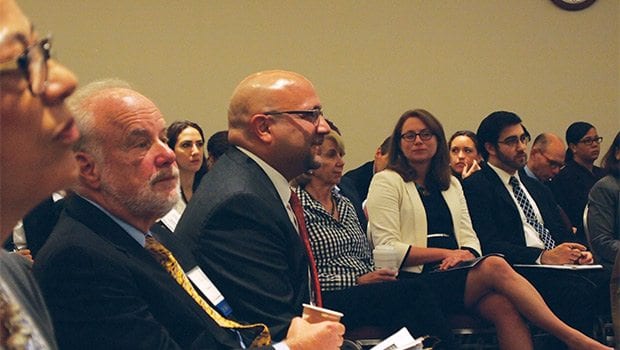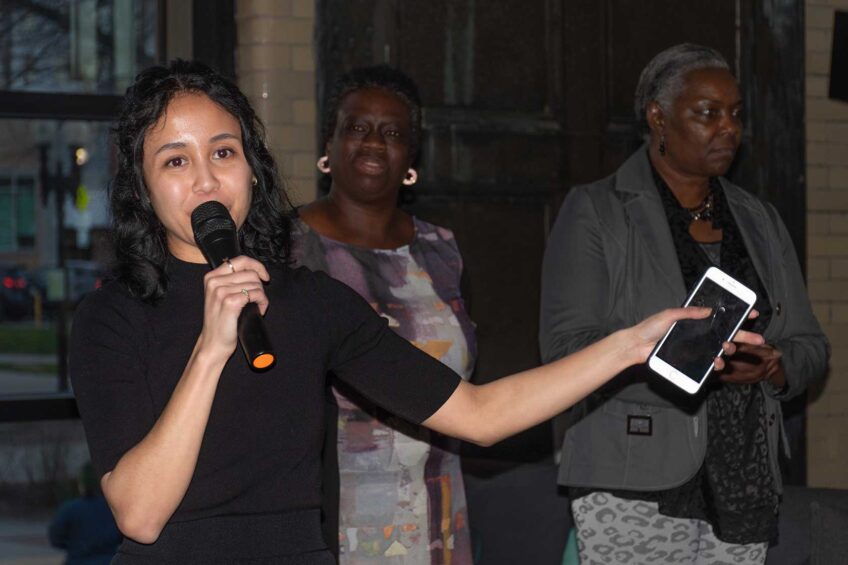Hearing airs ideas on cutting Massachusetts’ soaring health care costs

Health care specialists and elected officials convened on Monday for the first part of a two-day annual hearing aiming to get to the root of Massachusetts’s rising health care costs. In 2015, state healthcare spending grew by 4.1 percent, defying its goal of limiting spending growth to 3.9 percent. The average health care expenditure in 2015 was $8,441 per Massachusetts resident.
Impact
Rising costs disproportionately may prevent people in some income classes from meeting their health needs.
A recent report from the Attorney General’s office found that most of the health care spending in the state happened in higher-income communities and was not explained by greater medical needs. This could reflect two factors, the report states: One, a tendency of higher-charging hospitals to be located in wealthier communities, and two, socioeconomic barriers blocking lower-income individuals from acquiring sufficient. These barriers include lack of transportation to reach appointments, difficulty getting time off for appointments and lack of money for copayments, the report stated. Rising costs could exacerbate such inequities.
According to the AG’s report, 20 percent of Massachusetts adults with health insurance report having health needs that went unmet last year due to costs. One in six said they had difficulty paying medical bills, and one in five reported medical debt.
Drug prices
Pharmaceutical prices are a major culprit, driving 36 percent of the increase in health spending, according to Ray Campbell, executive director of the Center for Health Information and Analysis. The increased expenditures do not reflect greater levels of utilization, but rather higher prices, he said.
Prices for the arthritis drugs Humira and Enbrel shot up by 126 percent and 118 percent, respectively, over the past five years, according to Reuters. Eric Shultz, president and CEO of Harvard Pilgrim Health Care, said at the hearing that he advises legislation requiring drug companies to justify any large price increases.
Governor Charlie Baker said that the federal Food and Drug Administration’s sluggish approval process for generic medications — which are cheaper — aggravates the situation by depressing competition. As of July 1 this year, 4,000 drug applications were awaiting FDA approval, and the department takes a median of four years to approve a generic drug, Baker said. Given that generics are chemically equivalent to compounds that may already have been on the market for many years, he questioned why the approval process is not shorter.
Several health care providers, payers and hospitals filed testimony before the meeting recommending increasing the information provided to prescribers on alternatives to expensive drugs. Andrew Dreyfus, president and CEO of Blue Cross Blue Shield of Massachusetts, and several providers who spoke in person advocated tying drug prices to value received. As an example, Dreyfus mentioned a medication that can extend life for three to six months for patients with one type of cancer, but only about two weeks for another type of cancer. He suggested that patients receiving less of a reprieve should pay less for that drug.
Exorbitant prices are not limited to pharmaceuticals, noted Renato Mastrogiovanni, president and CEO of HealthView Services and member of the Health Policy Commission board. He said that in some cases, the cost of health care devices can be more than the procedure to implement them.
Hospital costs
Patient perceptions of better quality as well as provider network referrals often result in academic medical centers (AMCs) and teaching hospitals being selected for less-severe care cases that could be handled at a community hospital, according to an HPC report. This is a problem, because community hospitals tend to provide less expensive care at closer locations and score comparably to AMCs and teaching hospitals on nationally-accepted quality metrics, the HPC report states. And Massachusetts is rare nationally in its high utilization of hospitals for care, said David Auerbach, director of research and cost trends for the Health Policy Commission.
Part of the problem may be that those giving referrals lack sufficient data to make informed choices. Nineteen providers and 13 hospitals surveyed by HPC all said that their electronic health records systems do not make cost and quality data available at the time of referral.
A stitch in time
Rep. Jeffrey Sanchez, chair of the House’s Joint Committee on Health Care Financing, said that in 2015, 57 percent of Hispanics reported going to the emergency department for a non-emergency condition, compared to 34 percent of blacks and whites. Among the reasons he suggested: These patients may not be aware of non-emergency room options or may be turned off from primary care due to long waits to secure appointments; they may struggle with language barriers at the doctor’s office; and they may lack trust in doctors who do not understand their cultural backgrounds. Sanchez and several others spoke of a need to make medical service information transparent and to engage residents more effectively. The Massachusetts Health Insurance Survey found that in 2015, 82 percent of Hispanics reported having health insurance for the entire year, compared to 92 percent of whites and blacks, Sanchez said.
Christina Severin, president and CEO of Community Care Cooperative, heralded telecare — in which physicians remotely counsel patients via email, telephone, video-call or texting — as a way to offer care and follow-up in a manner convenient and easy for patients. Harvard Pilgrim’s Shultz said telecare brings an additional benefit of allowing providers to see patients’ home contexts, which is especially useful for psychological specialists.
Truly effective healthcare does not just address a person’s isolated incident of illness, but takes a holistic approach to advancing long-term wellbeing for both patients and their communities, and may include placing providers in community locations such as schools, Severin said.
Several providers spoke of the need for more widespread reimbursements to practitioners who offer telecare. Atrius Health’s Steven Strongwater said copay pricing could be refined to guide patient behavior, for instance by eliminating or sharply reducing copays for earlier-care options that might prevent emergency room visits.
“Patients shouldn’t have to pay a copay [for telemedicine],” Strongwater said. “It just encourages them to show up in the emergency room.”






